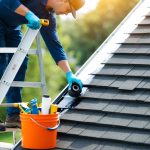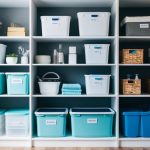DIY Roof Repair: Simple Steps to Prevent Major Leaks and Damage
Addressing roof issues early can save homeowners from expensive repairs. By tackling simple DIY roof repairs, individuals can effectively prevent major leaks and damage. A few basic steps and regular maintenance can make all the difference in prolonging the life of a roof.
Regular roof maintenance is essential in catching early signs of wear and preventing leaky roofs. Homeowners should inspect their roofs for loose shingles, damaged flashing, and debris buildup. Taking proactive measures can minimize the risk of water intrusion.
Equipped with the right tools and knowledge, DIY roof repair can be both rewarding and cost-effective. It’s important to prioritize safety and gather necessary materials before starting any repair work. With careful attention and timely action, homeowners can maintain their roofs and guard against potential problems.
Evaluating Damage and Safety Precautions
Understanding how to assess roof damage and prioritize safety can prevent further issues. Proper evaluation involves noticing subtle signs of wear, while safety measures ensure the well-being of those performing the inspection or repair.
Initial Roof Inspection
A thorough inspection begins with a visual check from the ground, identifying any apparent sagging, missing shingles, or debris accumulation. By using binoculars, one can spot less noticeable issues like curling shingles or rusted flashings.
Once a ground inspection is complete, it’s essential to safely access the roof if further inspection is needed. While walking on the roof, look for soft spots, which may indicate water damage or mold growth. Pay close attention to the condition around chimneys, vents, and skylights, as these are common leak points. Regular inspections, ideally twice a year, help catch damage early before it becomes a costly repair.
Safety Gear and Measures
Safety precautions are critical when inspecting or repairing a roof to prevent accidents. Wearing appropriate safety gear, such as non-slip boots and a hard hat, is essential. A safety harness can provide additional protection, especially if the roof has a steep pitch.
Secure ladders properly before climbing and never work on wet or icy roofs to reduce slip risks. It’s advisable to have someone else present to assist or call for help if necessary. Proper weather conditions are crucial; opt for dry, still days to mitigate risks associated with wind or rain. Implementing these measures helps ensure that the roof inspection and repair are conducted safely and effectively.
Tools and Materials for DIY Repair
Completing DIY roof repairs requires the right tools and materials to ensure the job is done efficiently and safely. Essential tools range from basic hand tools to specific roofing equipment, while selecting quality materials is crucial for durability and effectiveness.
Repair Equipment List
A successful DIY roof repair project necessitates an array of tools. Ladders are vital to safely access different roof areas. Ensuring stability and reach is important. A pry bar aids in removing damaged shingles without causing extra harm to surrounding shingles. For securing new shingles, the correct size and type of roofing nails is necessary.
Trowels are useful for spreading substances like roofing cement. Roofing cement serves as an adhesive and sealant for securing shingles. Having a roof sealant on hand is also essential in protecting seams and small gaps. Each tool is chosen not just for necessity, but also for efficiency and ease of use.
Selecting Quality Roofing Materials
Choice of roofing materials significantly influences the lifespan and success of any repair. It’s important to choose shingles that match or complement the existing ones to avoid an inconsistent look. Consider the material’s longevity and weather resistance. High-quality roofing cement is important for adhesion and waterproofing.
Using a reliable roof sealant can prevent future leaks, acting as a barrier against weather elements. Paying attention to material warranties can save costs in the long run. Roofer-grade materials often provide better results and should be prioritized for major repairs.



